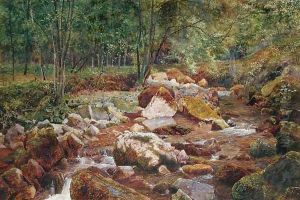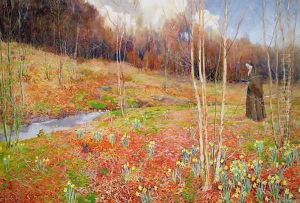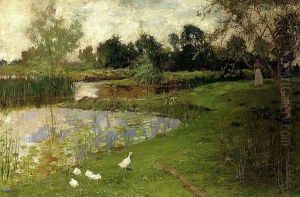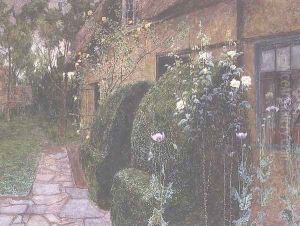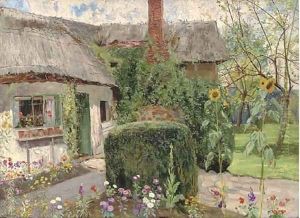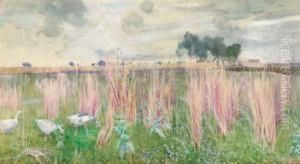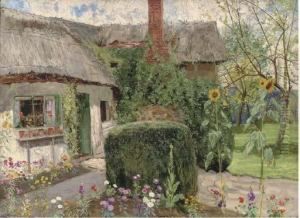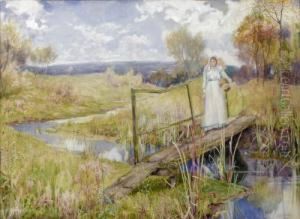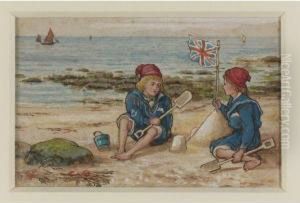John G. Sowerby Paintings
John George Sowerby was born in Gateshead, England, into a family with a notable legacy in glassmaking. His grandfather, John Sowerby, founded the Ellison Glass Works in 1807, which became renowned for its pressed glass, and his father, Anthony John Sowerby, continued the business, ensuring a thriving enterprise. Growing up in this environment, John G. Sowerby was exposed to the arts and crafts from an early age, which undoubtedly influenced his career path.
Sowerby's education and early career were deeply intertwined with the visual arts. He pursued studies in painting and illustration, showing a particular interest in botanical illustration and children's book illustration. His talents were recognized early on, and he contributed illustrations to several publications during the late 19th century. However, it was his work in glass design, following in the footsteps of his family, that marked a significant part of his career. He brought artistic innovation to the glass industry, incorporating Art Nouveau styles and techniques that were novel at the time.
Beyond his contributions to glassmaking and illustration, John G. Sowerby was also an author and playwright. He wrote books on glassmaking and design, sharing his knowledge and passion for the craft. His contributions to literature and the arts extended to the stage, where he wrote and produced plays, further showcasing his diverse talents.
Despite his multifaceted career, Sowerby remained deeply connected to his roots in the glass industry. He took over the leadership of the Ellison Glass Works after his father's passing and sought to modernize and expand the business. Under his guidance, the factory produced innovative glass designs that were both beautiful and functional, earning acclaim and awards at international exhibitions.
John G. Sowerby's legacy is that of a Renaissance man of the Victorian era, whose work bridged the worlds of art, industry, and literature. He passed away in 1914, leaving behind a body of work that continues to be appreciated for its creativity and craftsmanship. His contributions to the glassmaking industry, in particular, have been celebrated in exhibitions and collections, highlighting the enduring impact of his vision and artistry.
